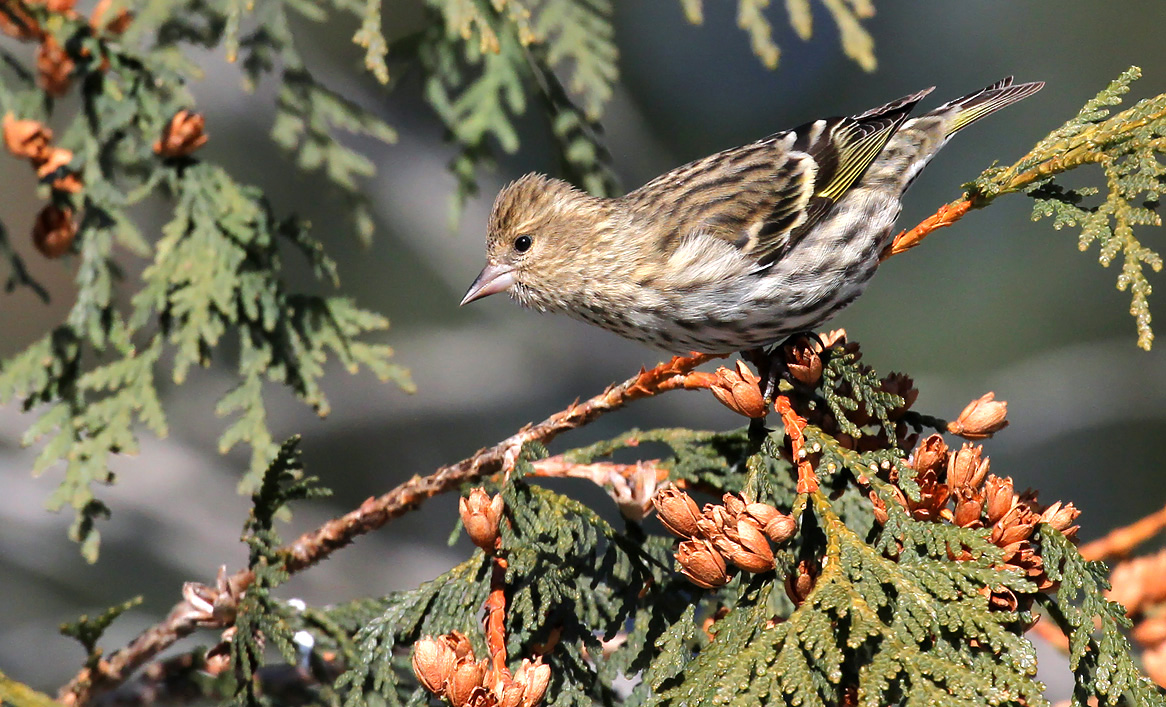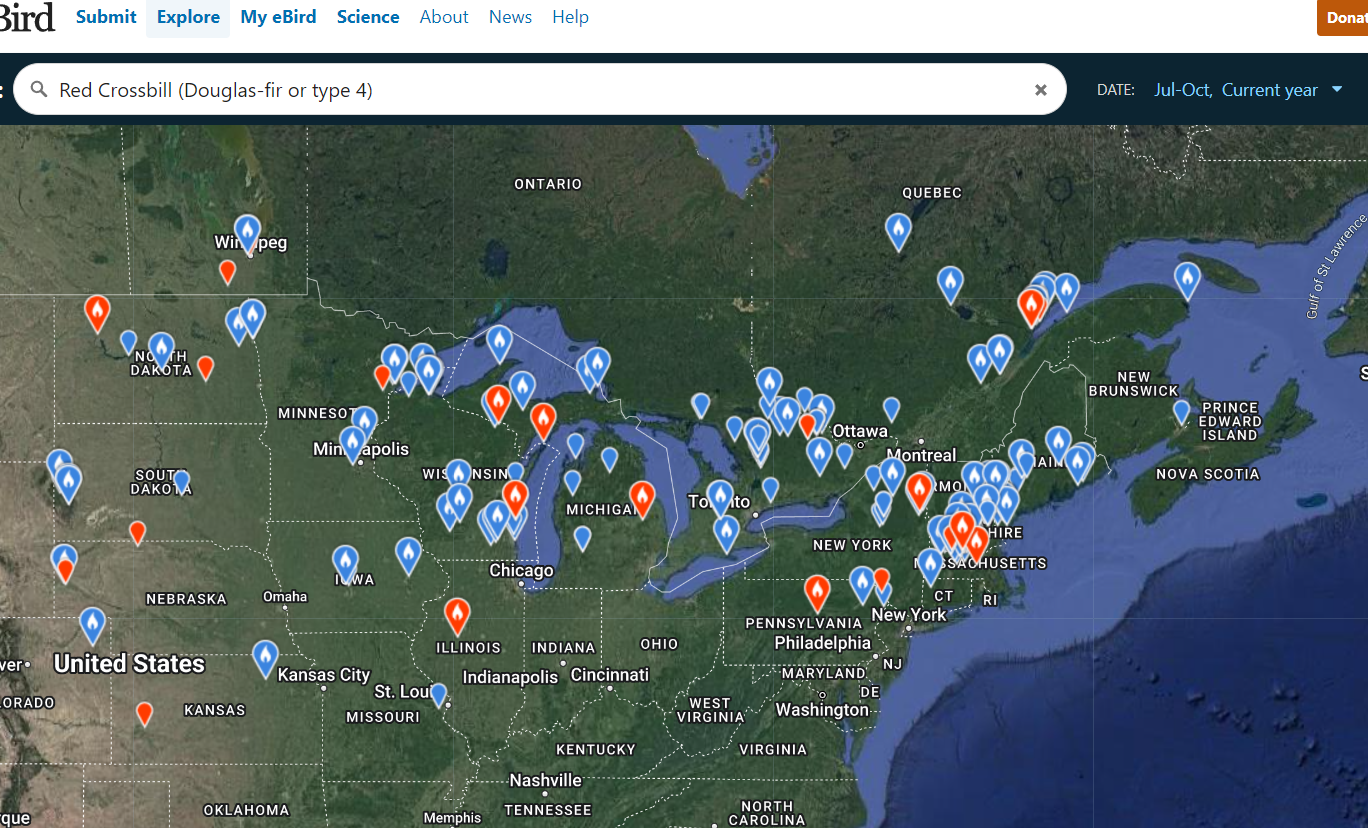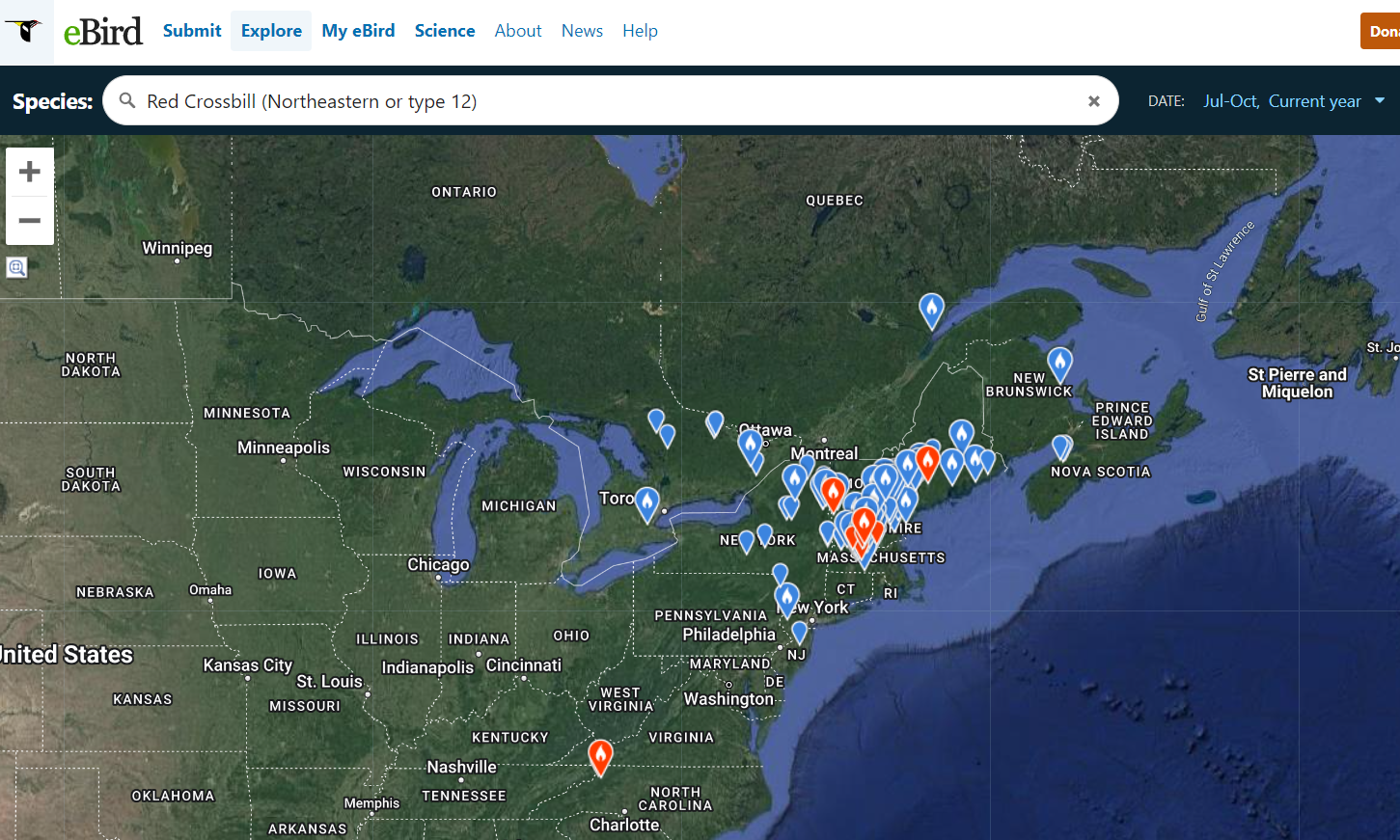Irruption Alert: Winter Finch Forecast Update
By Tyler Hoar and Matt Young:
As predicted in the Winter Finch Forecast, the biggest finch story this year will be the movement of Pine Siskins south out of the Boreal Forest. Migration monitoring stations at Hawk Ridge Bird Observatory Duluth Minnesota, Whitefish Point Bird Observatory in the upper Pennisula Michigan, and Observatoire d’oiseaux de Tadoussac, Quebec have combined as of October 21 for over 115,000 Pine Siskins counted. Peak days include 11,595 at Tadoussac on October 6 and 19,260 on October 21 at Whitefish Point. So far at Whitefish Point, almost 50,000 Pine Siskins have moved through, which is 41% of the total movement of individuals to have migrated through Whitefish Point this fall. Small flocks of Pine Siskins are being seen passing through Pennsylvania and Maryland. And individuals have made it south all the way to the the Gulf Coast of Louisiana.
Jessé Roy-Drainville Migration counter for Observatoire d’oiseaux de Tadoussac had an impressive 11,081 Common Redpolls pass by heading southwest on October 23. This location only had few individual redpolls this fall until October 14 when the first 100+ redpoll morning happened. Small numbers of Common Redpolls have been reported already this fall from Montana, Southern Alberta, Ottawa, and even Chicago.

The Purple Finch movement has continued to be much stronger in the Midwest States. Northeast of Duluth on Lake Superior an impressive 3750 passed by Stoney Point MN on October 2nd. To the areas east of the Great Lakes the movement has been slower but steady as predicted. Individuals have reached as far south of North Carolina, Tennessee, and Arkansas.

The Evening Grosbeak (Type 3) movement, as expected, has been limited so far. However some individuals have made it to Gary, Indiana and the Detroit area. Four satellite tagged grosbeaks, as part of the Evening Grosbeak Road to Recovery Project, currently seem content to remain in central Quebec and northern Maine. Traditionally the next two weeks will dictate the movement of Evening Grosbeaks in eastern North America for this winter. With that said, Type 1 Evening Grosbeak, the irruptive type in the west, seems to be occurring in the southern Rockies in higher than usual numbers already (remember to audio record Evening Grosbeaks so FiRN can ID them to call type). Our other irruptive grosbeak, the Pine Grosbeak, doesn’t look to be irrupting in the east, but Foothills Birds feedercam just to the southwest of Calgary Alberta, did have a Pine Grosbeak at their station on Oct 19th, the 3rd earliest they’ve ever had one. That same feedercam (Mountain Daylight Savings time 8:15am-5pm) is already hosting 100+ Type 1 Evening Grosbeaks as well — this is also an early date to have so many.
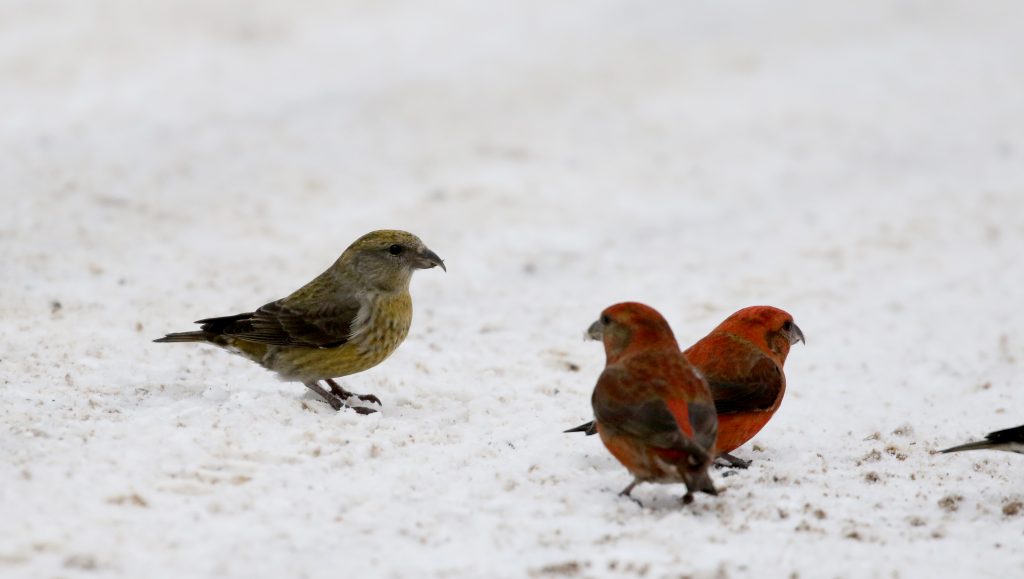
As for crossbills, Type 2 and 4 continue to occur in the northeast in their best numbers in years, even decades for type 4. Type 12’s, the Northeastern Crossbill, are present in their usual haunts. And Type 3 appears to be showing signs of coming east as well. Check areas with bumper eastern white pine cone crops for crossbills this fall into winter. Look for some of these birds to likely shift eastward and southward as winter progresses.
And lastly, steady numbers of dozen to hundreds of White-winged Crossbills are still being reported most days at Tadoussac. Some of these could shift southward as winter progresses as well — and as evidence that this could already be happening, a flock of 11 were reported at Hawk Mt. Sanctuary in Pennsylvania Monday October 23 .
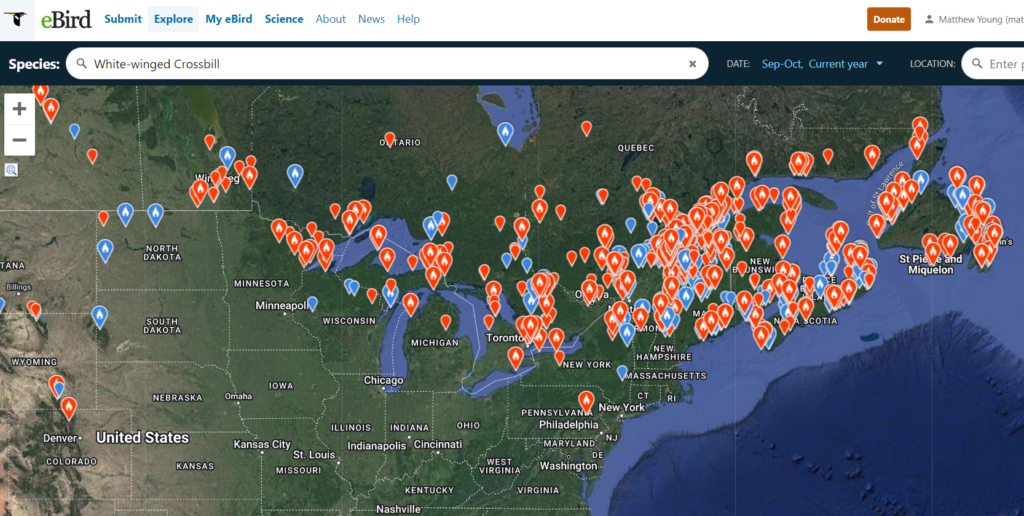
Stay tuned here for more on this season’s unfolding finch story, and remember to keep the feeders stocked and cleaned for Pine Siskins, Common Redpolls, Purple Finches and goldfinches and House Finches. And record those Red Crossbills and Evening Grosbeaks if you happen to come across a flock or two — FiRN will ID them to call type for you.

Cover Photo Ryan Brady
FiRN is a nonprofit, and was granted 501c3 status in 2020. We are a co-lead on the Evening Grosbeak Road to Recovery Project, and have funded upwards of almost $10,000 to go towards research, conservation and education for finch projects in the last year plus. FiRN is committed to researching and protecting these birds and other threatened finch species like the Evening Grosbeak, Rosy-finches, and Hawaii’s finches the honeycreepers, and if you have been enjoying all the blogs and identifying of Evening Grosbeak and Red Crossbill call types (upwards of 20,000 recordings listened to), redpoll subspecies and green morph Pine Siskins FiRN has helped with over the years, please think about supporting our efforts and making a small donation at the donate link below.
Donate – FINCH RESEARCH NETWORK (finchnetwork.org)
Shirt Link
For a commemorative Winter Finch Forecast shirt where proceeds will go towards the study and conservation of finches and their habitats globally, see here: https://finchnetwork.org/shop
Feedercam
The Finch Research Network has a feedercam co-sponsored by Aspen Song Wild Bird Food, who is a member of Wild Bird Feeding Institute, and that will go live again in Caribou, Maine around November 5.
Please think about joining these Finch Research Network iNaturalist Projects:
Winter Finch Food Assessment Project/Become a Finch Forecaster: https://finchnetwork.org/the-finch-food-assessment-become-a-finch-forecaster
Red Crossbill North American Foraging Project: https://finchnetwork.org/crossbill-foraging-project
Evening Grosbeak North American Foraging Project: https://finchnetwork.org/evening-grosbeak-foraging-project

